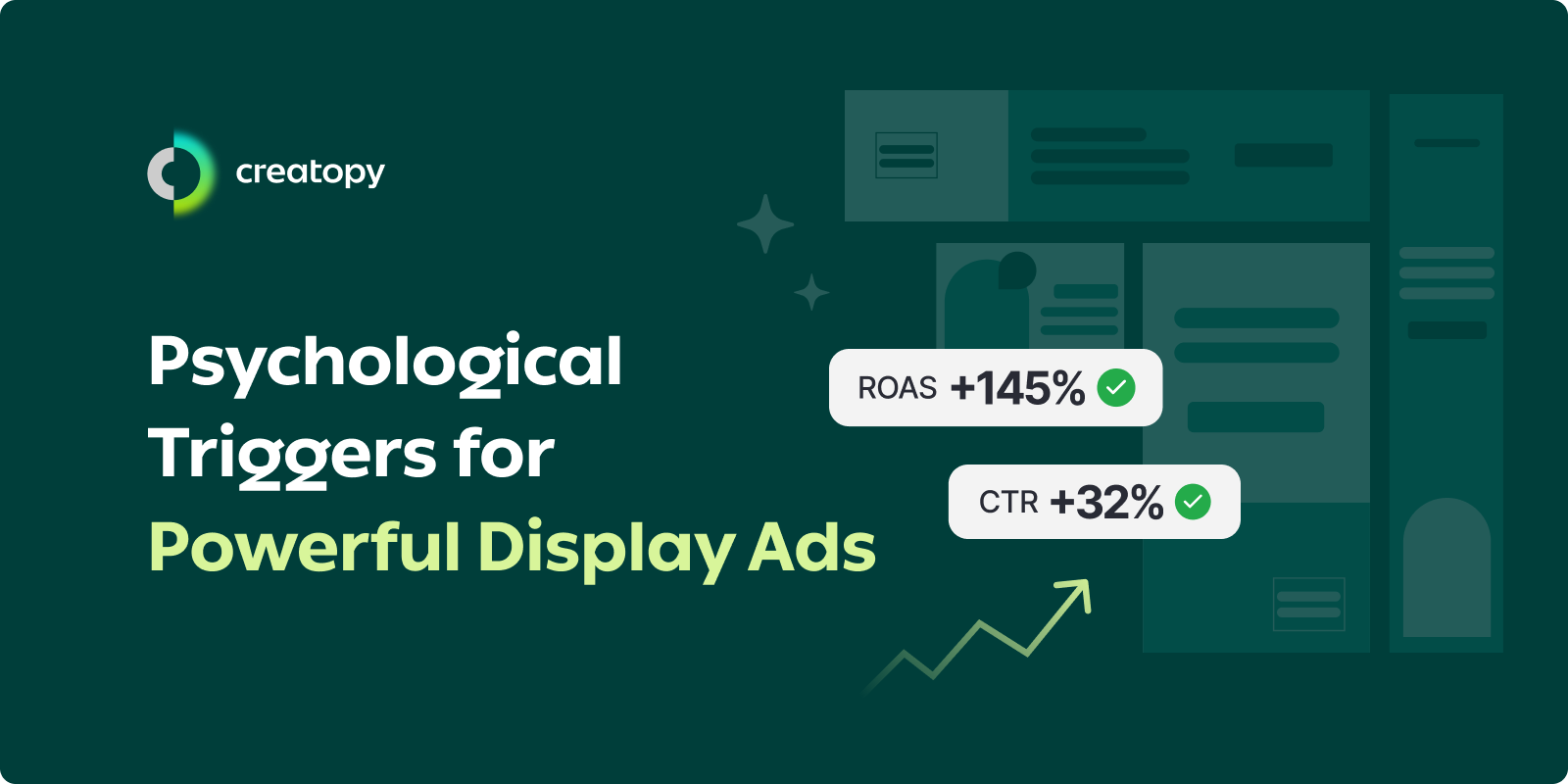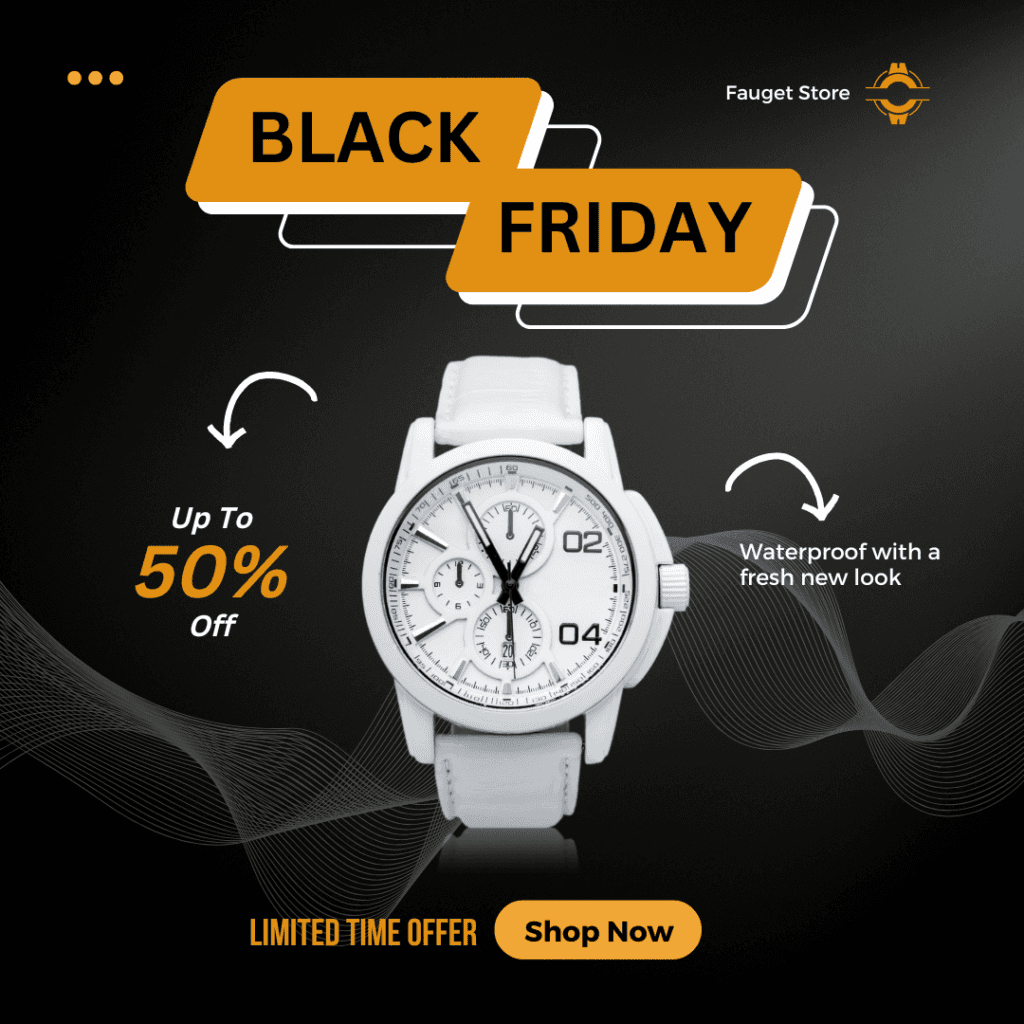Are you an agency? Scale your team's work and impact with The Agency Package.
Are you an agency? Scale your team's work and impact with The Agency Package.

Let's talk about emotional display ads' psychological triggers and why they're crucial for your digital advertising success. Do you know that feeling when an ad just gets you? That's no accident. As Eugene Schwartz said,
No sentence can be effective if it contains facts alone. It must also contain emotion, image, logic, and promise."
And honestly, in today's crowded digital space, that's never been more true. Getting your ads to the right people at the right time matters a lot when you want to make an emotional connection. How you deliver your ads can greatly affect how well they connect with viewers' feelings. When done right, they build strong emotional bonds that get people to take action.
Numbers show us how display ads are doing right now. According to StoreGrowers, we're looking at an average CPA of $65.80 for display ads. Meanwhile, Meetanshi tells us the average click-through rate is 0.46% across industries. Now, before you start wondering if psychological triggers in marketing emotional triggers are worth the effort, consider this: these numbers actually show us just how much opportunity there is to stand out when we get the emotional connection right.
Marketing emotional triggers are worthy of your attention because they connect with how people think and feel. Do you know how marketing emotional triggers work differently than plain old facts? Well, there's science behind that. Oberlo's latest data shows we'll spend nearly eight hours daily with digital media in 2025. That's a lot of screen time to compete for, which is why psychological triggers for online marketing need to be crafted smarter than ever.
Think about how your brain processes emotions versus plain information. When you see an ad that moves you, something fascinating happens in your neural pathways. They activate in patterns that help memory formation and decision-making processes. This biological response explains why emotional advertising often outperforms purely rational appeals.
Image: Brain regions activated by emotional advertising

Want to know what's really interesting? Those first few seconds when someone sees your ad? That's where the magic happens. The emotional connection formed in that moment can influence how people think about your brand for months—sometimes even years.
You know that warm feeling you get when something just makes you smile? That's exactly what we're aiming for with happiness triggers in advertising. And here's an interesting tidbit: according to PPC Land, display advertising CPM jumped up by 47% in Q2 2024. Why does this matter? Because when everyone's paying more for ad space, joy-based emotional triggers become very valuable for getting noticed.
Such ads make people feel good about your brand. This works by activating the pleasure centers in viewers' brains. When people associate your brand with positive emotions, they tend to remember your message and take desired actions. Happy customers are more likely to share their positive experiences with others, creating a ripple effect of emotional engagement.
To create joy in ads, you need to know what truly makes your audience happy. Superficial attempts can feel forced and inauthentic, potentially damaging brand trust. The key lies in identifying real moments of joy that resonate with your target market's experiences and aspirations.
Fear-based psychological triggers must be handled with care. Rather than creating anxiety, focus on presenting solutions to existing concerns. According to FirstPageSage, addiction treatment ads get clicked 5.9% of the time when they handle fears the right way.
Creating urgency in ads works because people don't want to miss out on good things. When done right, urgency makes people feel they have an opportunity, not a threat. This positive approach to fear-based marketing keeps people's trust while getting them to act.
Good urgent messages need perfect timing. Rushing customers toward decisions can backfire if the urgency feels manufactured or manipulative. The goal is to show real time-sensitive opportunities that help the customer.
These offers work best when they match when people want to buy:
Image: Fear/urgency-based image that ethically promotes The Brief as a design tool
Text: Create professional urgency-driven ads like this using The Brief's intuitive design tools and templates. Because great opportunities shouldn't wait.
Image Text Elements to Annotate:
Exemplu:

Building trust through psychological advertising needs steady messaging and proof. Data from iMarcGroup shows that in-app advertising will grow by 16.14% yearly from 2025 to 2033, which shows why building trust online matters more each year.
Image: Analysis of the key in-app advertising market trends in each segment of the market, along with forecasts at the global, regional, and country levels for 2025-2033
Source: https://www.imarcgroup.com/in-app-advertising-market

Trust in digital ads grows in steps. People first notice trust symbols, then look for other customers' experiences, and finally check if messages stay the same across different places. Every step needs support through good color, design, and content choices.
Visual trust symbols work as the first step to building belief. These elements must be easy to see but not overshadow the main message. Research shows that well-placed trust badges can increase sales when backed up by other proof.
Main trust-building parts include:
Pride is not just about making people feel good—it's about tapping into their desire to be their best selves. And here's an interesting number: Statista tells us that 25% of U.S. apps are making money through ads. What does this mean for us? Well, achievement-focused messages are more important than ever.
Such ads help people connect their personal growth with your brand. When customers link their successes to your product or service, they become more loyal. Also, keep in mind that success stories work best when they show both the journey and the final result. People respond better to real progress stories than claims of instant success.
Image: Colaj using images from Nike's "Just Do It" campaign
https://krows-digital.com/nikes-just-do-it-campaign-a-masterclass-in-marketing-excellence/
Text:
Main Image Elements to Annotate:
Brand Success Indicators to Note:
Messages about status and being special need careful balance:
Nostalgia creates strong emotional bonds by reminding people of shared memories. Your emotional display ads can use this psychological trigger by connecting today's opportunities with good memories from the past.
Nostalgia marketing works deep in how people think and feel. When viewers see familiar things from their past, it creates feelings of comfort, trust, and hope. Making good nostalgic content means knowing your audience well. Different age groups respond to different historical references and cultural moments.
Important nostalgic elements include:
Image: Turn Yesterday's Magic into Today's Sales
Shared Memories: Create connections through collective experiences that people remember fondly
Generational Appeal: Understand and target specific age groups with their unique cultural touchstones
Authentic Representation: Use genuine historical elements rather than stereotyped versions of the past
Emotional Storytelling: Introduce narratives that connect past positive experiences with present offerings
Cultural Context: Add recognizable symbols and references from specific time periods
Modern Relevance: Bridge yesterday's memories with today's needs and values
Trust Building: Use familiar elements from the past to create comfort and reliability
Ready to spark some hope? Let's talk about psychological triggers for online marketing that make people feel genuinely optimistic. As Howard Gossage wisely noted,
Nobody reads advertising. People read what interests them, and sometimes it's an ad.
And you know what really interests people? A bright future they can believe in. When your emotional display ads show achievable dreams, people lean in. However, realistic aspirational content converts better than overly idealistic messaging.
Creating hope in advertising is like building a bridge between today and tomorrow. When you combine "here's what's possible" with "here's how to get there," something amazing happens
Here's what really works in aspiration-based content:
Image: Beyond Optimism: The Power of Hope in Modern Marketing
Future Focus: Show attainable progress, not impossible dreams
Clear Pathways: Present achievable steps toward desired outcomes
Empowerment Message: Enable confidence through "you can" messaging
Success Validation: Share authentic stories of real achievement
Solution Vision: Paint a picture of obstacles overcome
Actionable Hope: Provide concrete tools for progress
Community Connection: Build belonging through shared aspirations
Scarcity triggers work because people naturally want things that are hard to get. According to StoreGrowers, companies spend about $45.27 for each search ad action, making scarcity-based conversion important. Scarcity in advertising makes people want to act quickly.
Finding the right balance between urgency and honesty is key for scarcity marketing. False claims about limited availability can permanently damage trust, while real limits drive strong engagement.
Time and quantity limits affect people differently. Countdown timers often get more responses than limited-quantity messages. However, using both time and quantity limits together can increase response rates.
Great scarcity methods include:
Let's get practical! Creating emotional display ads with all these psychological triggers might sound complicated, but here's some good news—The Brief makes it surprisingly straightforward. The platform's animation features let you control timing and strength perfectly, making emotional connections stronger while keeping ads professional.
As for template customization, it helps make campaigns faster without losing emotional authenticity. Starting with proven frameworks allows creators to focus on emotional fine-tuning rather than technical setups.
Image: The Brief interface screenshot – Platform interface showing emotional advertising tools and features
Want to know if your emotional ads are working? It's not just about counting clicks anymore. Modern tracking tools show complex patterns in how people respond to different emotional triggers. Heat maps, for example, show how people interact with emotional elements. Analysis of viewer attention patterns helps refine emotional trigger placement and intensity. A/B testing emotional variations also reveals audience preferences clearly. Systematic testing of different emotional approaches builds a reliable data foundation for future campaigns.
After all, emotional advertising changes how people see brands over time. Consistent emotional messages can increase brand loyalty, so tracking these long-term effects helps guide emotional strategy.
As we've explored these seven psychological triggers, one thing becomes crystal clear—the future of advertising isn't just about being seen; it's about being felt. Think about what we've covered—from joy to nostalgia, from trust to urgency. Each trigger offers a unique way to break through the digital noise. Standing out through emotional connection isn't just nice to have—it's essential.
Looking ahead, success in display advertising will belong to those who can authentically tap into these emotional triggers while adapting to consumer preferences. With tools like The Brief at your fingertips, you're not just creating ads but building bridges between your brand and your audience. So, let's make those emotional connections count. After all, in a world of endless scrolling, the feelings we create make people stop, engage, and remember.
7 days free on us
Let's put these insights into action. Build, scale, and automate campaigns with AI-powered workflows.